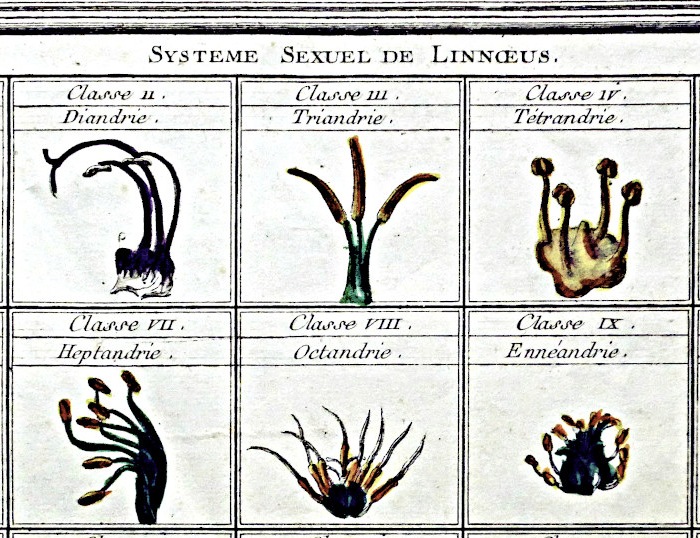

Could you draw the image to the right, in the medium of your choice, at any scale? How about creating it by carving it in wood... in reverse? (You would cut away the bits that are white.) Amazing. Do a Google search on "kelmscott morris woodcuts" and switch to the "images" results. But remember to come back here in due course! (Technically, I believe they are wood engravings, the technology pioneered by the marvelous Thomas Bewick of Newcastle.(A survey of techniques for printing illustrations is available at Victorian Web.)
Alas, it is now too late to see a special page connected with William Morris's Kelmscott Chaucer at Tim and Pinda Bryars' book and map emporium in Cecil Court, London (just above Trafalgar Square... inspiration of Diagon Alley)... but pay them a visit, see what is there today that a more nimble collector will have tomorrow. Always nice things passing through.
If you have your heart set on a Kelmscott treasure, Sotheran's, Piccadilly, London have some in stock as I edit this page. Put "Kelmscott" into their search engine, in the description field.
And of course the best things never make it into the booksellers' online catalogues. Treat the dealers right, and they will look after you. They still take all the trouble... and it is trouble... of creating a description. Visit your bookdealer! Especially if you are new to book collecting, please visit my paean (not to be confused with paeon.. or peon!) about the people who sell antiquarian books.
If you collect, you should keep records. I recently found an acceptable- to- me way to add barcodes to my system for that... fulfilling a long held ambition. Delighted with results, and what the barcodes do for my collection record keeping.
This page is a "menu" from which you can access pages I've written about book collecting... mostly discussions of specific books or authors.
A "little detail": Please don't imagine that I own all of the books discussed here! Other collectors can be very generous about letting people see their treasures!
In some cases, I will talk mostly about a book's content. For old books, you too can often have the full text, courtesy of Project Gutenberg without any need for you to stir beyond your internet terminal.
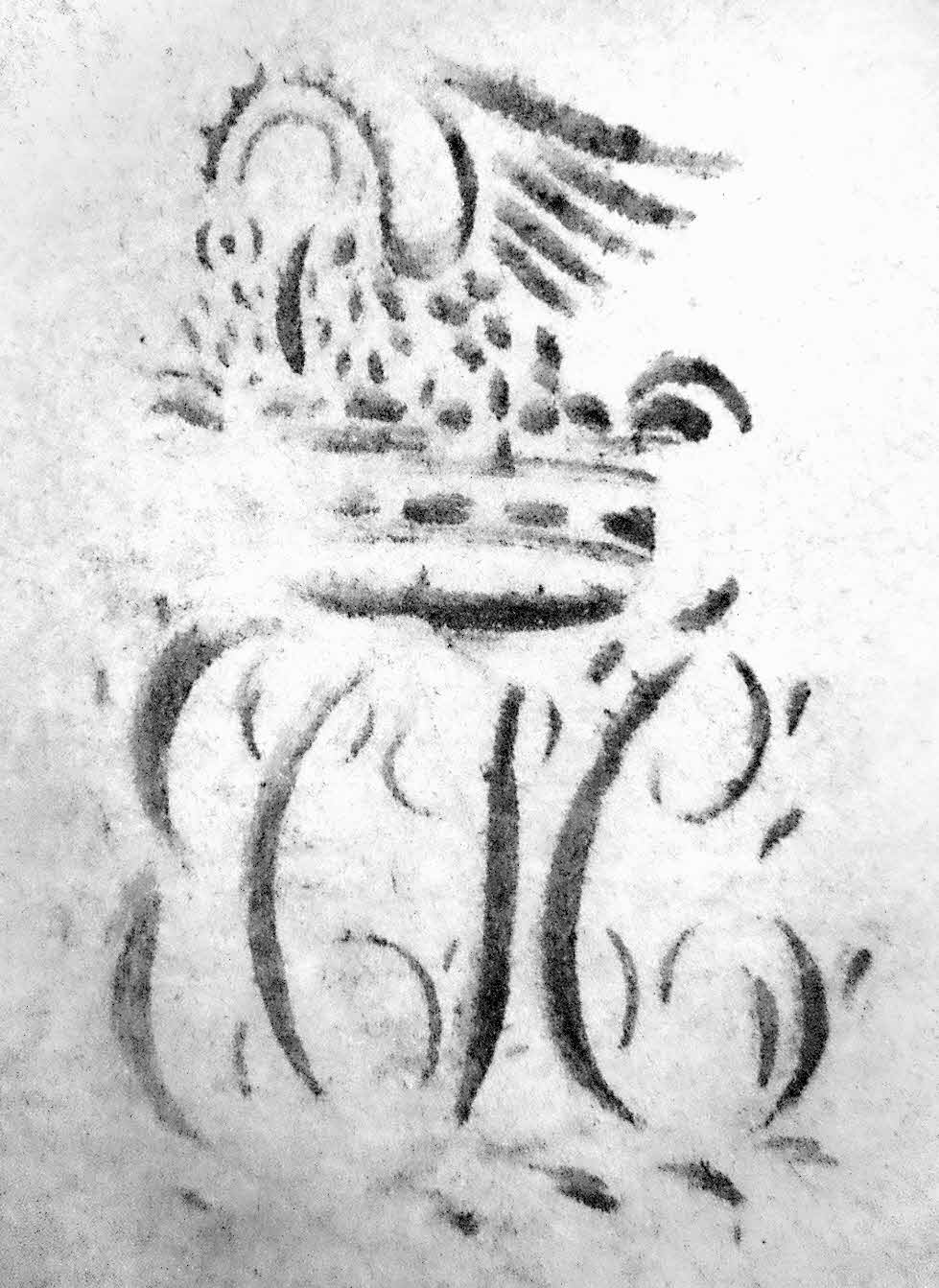
Forgive me? Just before we get to things for you... things for me? Do you know anything about the mark shown to the left? It is stamped on the title page of something I own, and I would like to know more! Here is how you can contact me... by form, or by email. Thanks!
... and then there's...
I recently bought two plates. They depict the systems of Linneaus and Tournefort for categorizing plants. Can you help me discover what book these plates came from? I have a page for you with details of my plates headed "Tableau élémentaire de botanique, / suivant Linnaeus et Tournefort"

Now... stuff for you!....
Naval Engineering, early 1800s Fascinating... well, they fascinated ME... collection of plates from Rees's Cyclopedia, about naval architecture and machinery, from the very early 1800s. Have a look. Try to imagine a world from before our modern era. Just the plates describing what was being made are, to me, pretty impressive. And pretty!
Beautiful set of student's notes from early 1800s. 193 pages of exquisite hand written, hand drawn notes done by a student named Kobke, studying gunnery and fortifications at the Danish Royal Naval Academy 1823-1825. The quality and sheer extent of the work is astonishing.
![[graphic]- senza_frm_dealer...](imgs/senza_frm_dealer-dsc06567-thumbnail.jpg)
A bit of a mystery... Gianni Versace created a sumptuous book called "L'Umno Senza Cravatta", also published in an English version, "Men Without Ties". And there may... or may not!... be inscribed copies on the market. See what you think from the photos and discussion on the linked page.
JM Barrie/ Peter and Wendy Inscribed copy of 1921 Lucie Mabel Attwell edition, "to" the infant son of one of the prototypes of Peter Pan, on child's first Christmas, in year that edition first published... though you might say it was as much a gift to the grown boy and his wife as to the baby, mightn't you?
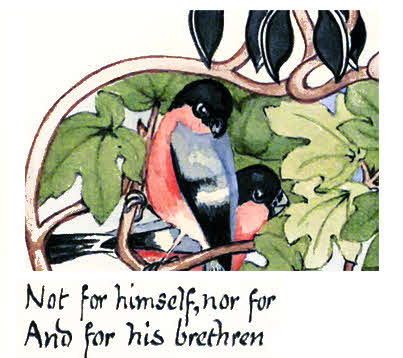
Tragic injustice! Please help... Who created this beautiful thing? (Further details at the sub-page the link will take you to.)
The illustration comes from a manuscript dated 1906. Possibly an expert bird watcher, or even professional ornithologist created it. Certainly someone who was at least a very talented, skilled and craftsman (or woman) -ly person. And yet all we now know is that his/ her initials were MSZ. Please pass https://tinyurl.com/who-was-msz-bird-artist to as many people as you can think of who might be able to supply avenues for investigation? (The tinyurl takes you to the same page as the link at the start of the paragraph, where further details are published.)
-----------------------
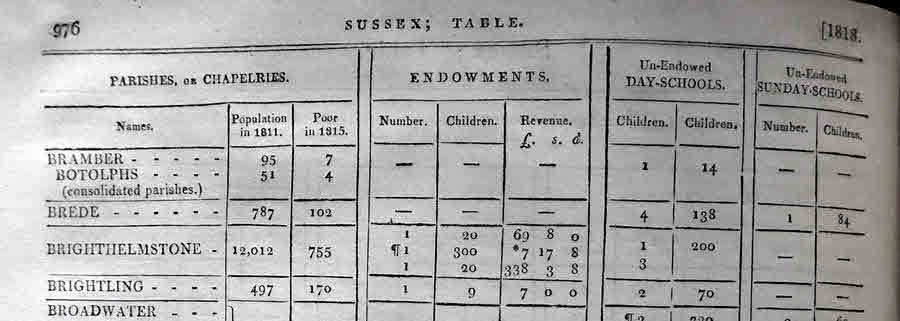
Parliamentary Reports and investigations of provision of education for the poor, throughout Great Britain, 1819. A fabulous body of work. The webpage, not the Parliamentary reports, has a little bonus: information about the founding of a new school, 1834, Yorkshire. To "visit" the excited moment, so full of good intentions and high hopes cheered me.
----------------------------
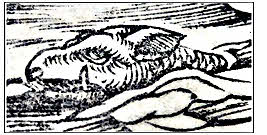
Like this page? Tell your friends! If you're on the phone, or using ink, the following will get you to here also...
https://bit.ly/MadAboutBooks (or "https://bit.ly/madaboutbooks", but not other capitalizations)
Page from Munster's Cosmographia. A later edition. (First edition, 1544)
Discussion of Columbus's discoveries in the Caribbean 52 years earlier... and dragons... and cannibals!
-----------------------
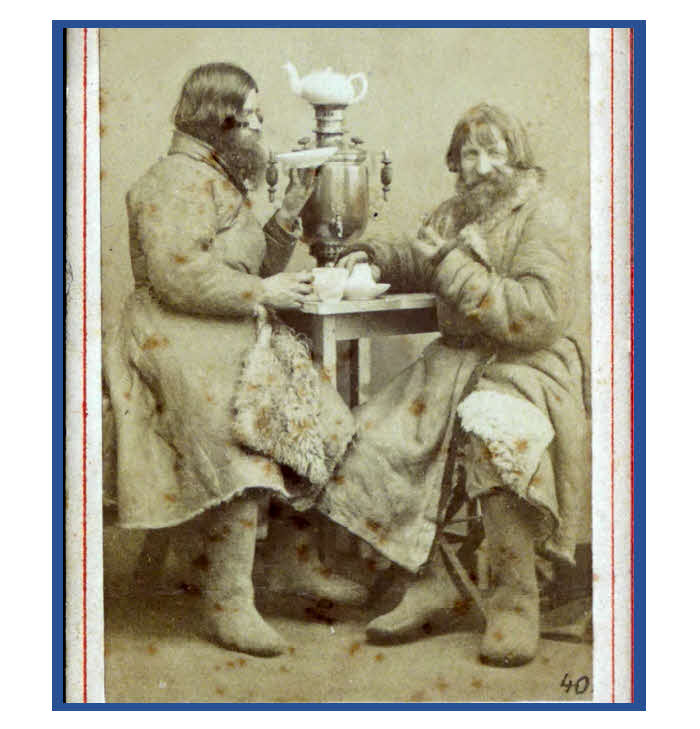
Images from a foreign place, time. "The past is a foreign country. They do things differently there." I recently had the chance to look at photos from czarist Russia, by William Carrick. Carrick died in 1878. Interesting for the subject, but also an interesting moment in the history of photography... Carrick might be said to have been one of the pioneers ethnographic photos, such as National Geographic do so well.
Read DeMille's book Charm School one day, for an interesting insight into the history of Russia. While the Russians fought valiantly alongside the US and Britain in WW II, their then-recent history was very, very different. Grandparents of some of the soldiers grew up in a society not unlike the 1500s in other parts of Europe.
------
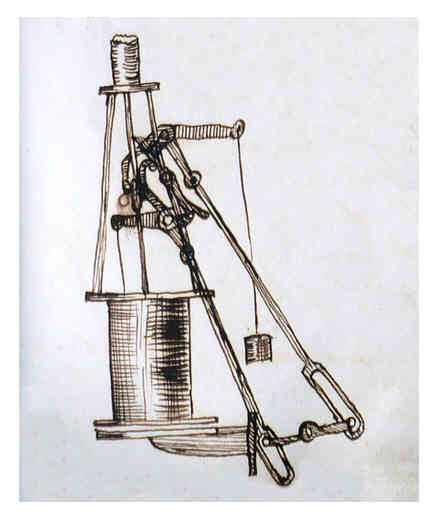
An Uncommon "Commonplace" Manuscript by John Urpeth Rastrick, a pioneer of the industrial revolution. With engineering drawings. Rastrick was one of the three judges of the Rainhill Trials (to see if horses of the newly invented "steam locomotive" was better for pulling cars of coal along wooden tracks). Rastrick heavily involved with the birth of the steam engine, as set out in the fragment from Wikipedia cited.
------
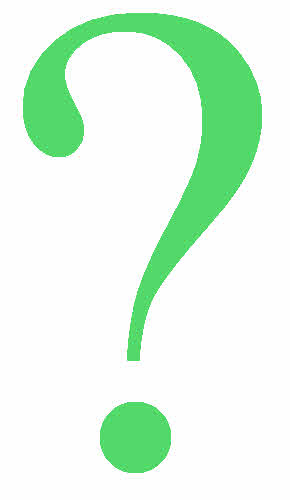
No image with this one, to tempt you to visit, because exploration of this book starts with a puzzle, for you, the reader. Can you recognize what the book is, or at least what it is about, if I tell you a bit about a sea captain born in Dorset, England, in 1668, and one of the great composers of Western music, born in Germany in 1685. (Ah yes... but which one?).
I hope that you won't let the slenderness of these reasons to visit deter you. The book, and the thinks it is related to, are very special. It has sucked days from my life, as I have attempted to do it justice. I will even confess that they have not been entirely unemotional days.
Read about the sea captain's dream, and what he did about it.
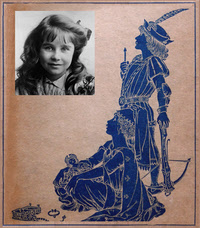
------
The story of a fun moment for me, as a book collector. A copy of Princes and Princesses by Mrs Lang, with her husband as editor, was at the heart of it. (Yes, the Langs of the colored Fairy Books, published 1889-1910.)
------
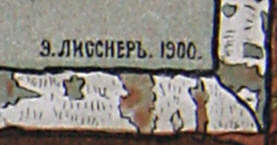
A beautiful survivor from pre-revolution Russia... an illustrated telling of the Russian folk tale about the wily fox and the hapless wolf. 'Skazka O Lisichke Sestrichke I Volke..'; Moscow, G. E. Lissner, 1902. Illustrations, I am told, by Ernest Ernestovitch. But no one's heard of him, despite the name appearing in a 2003 Bonham's description of something similar. I think the illustration to the left shows "Lissner" in Cyrillic. Was he publisher AND one of the illustrators? Have you ever seen a name thus without it indicating the artist? Can you tell me anything about Ernestovich? I had mistaken the illustrations in 'Skazka O Lisichke Sestrichke' for the work of the better known Bilabin. Whatever the truth of the bibliographic mysteries, it is a beautiful thing!
This was one of the fruits of the amazing auction at Strides, in Chichester, England, July 2015 where Bob Date's collection was dispersed to a very appreciative gathering of dealers and collectors.
------
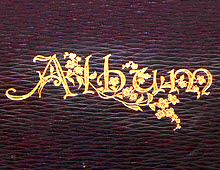
Not a published book... a one off, a manuscript "commonplace". With a story. Effie's Commonplace
------
In 1907 Dr. Albert Gray published a remarkable two volume encyclopedia of the inner ears of a vast selection of vertebrates. Using the technical term for the inner ear, it was entitled "The Labyrinth of Animals, Including Mammals, Birds, Reptiles, and Amphibians". Not only was it a fantastic achievement just in general, but it had a special feature. For each species, there were photos of the inner ear organs... stereo-photo pairs! Now... you might say that you haven't been yearning to know the differences between a kangaroo's inner ear and, say, a gorilla's. However, if you visit my page about the book, I think you will be stunned by the details of the work which had to be done, over and over, to prepare the specimens to be photographed... which I explain, for the marvel of it.
------
A full facsimile of a pamphlet produced in 1920 about a mission on an Indian reservation in Ethete Wyoming.
------
Some images from Diderot's Encyclopedia. It attempted to be a Wikipedia for its day. Not the first encyclopedia, but the first that attempted to find experts to write the various entries in it. And, more to our point: Just gorgeous. (Created between 1751 and 1772.) (The images, not the webpage!)
------
Images from Oliver Byrne's presentation of Euclid. From 1847, and unusual, in that Byrne tried to make the material more accessible for the pupil by the use of color.
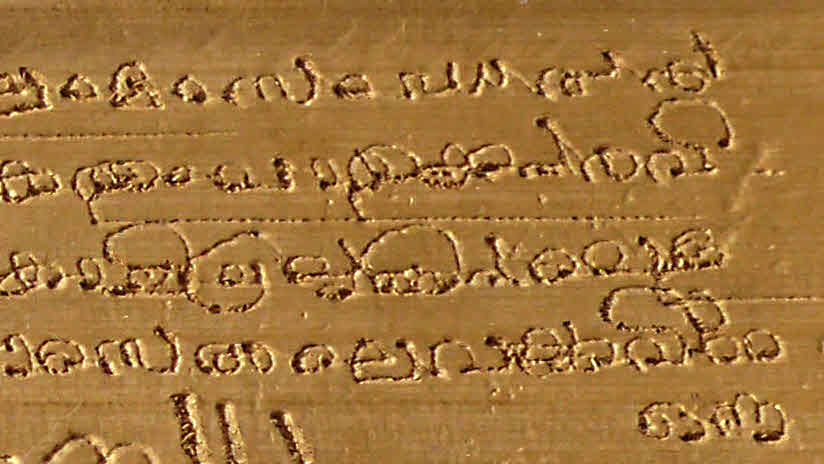
------
A curiosity! One I hope you can help me with! This is text that was "written" in the fleshy underside of a palm frond when it was green, by very neat "scratching" into the tissue. Once it dried, it became very hard to alter. Was that part of a cunning plan? Said to be quite old. More details on my page about the perplexing palm frond.
------
John White- Australia: In 1787, John White sailed to Australia as the chief surgeon of an expedition to establish the penal colony at Botany Bay. His journal, with much about natural history and other topics less dolorous than the fundamental reason for the expedition, was published... sumptuously... not long after.
------
James Ferguson- Astronomy: Heard the one about the ocean's tides being because the moon pulls the water towards itself?
That does make sense... up to a point. It might amount to about 4" of tide on the side of the earth closest to the moon.
But. Um. Why does the water also bulge outward on the side away from the moon.
And it gets worse: We don't have much excuse for not knowing what is going on. It was explained in James Ferguson's Astronomy Explained Upon Sir Isaac Newton's Principles, a long time ago. (First edition: 1756). Well. I say "explained". I must admit that modern textbooks do seem a bit more accessible. Which is fine... as long as they don't dumb something down. (Don't get me started on the candle in the inverted jar showing that air is 20% oxygen!)
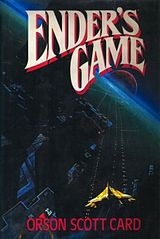
I have a section dedicated to author Orson Scott Card. For the moment, it is mostly about his 1985 book "Ender's Game", but there is some material about other books by him, and that material will grow, because I think he is a much under-appreciated writer. And friends I've recommended him to do seem, in general, to agree! (Illustration: cover of the 1985 hardback version of "Ender's Game". My thanks to whomever made it available at Wikipedia)
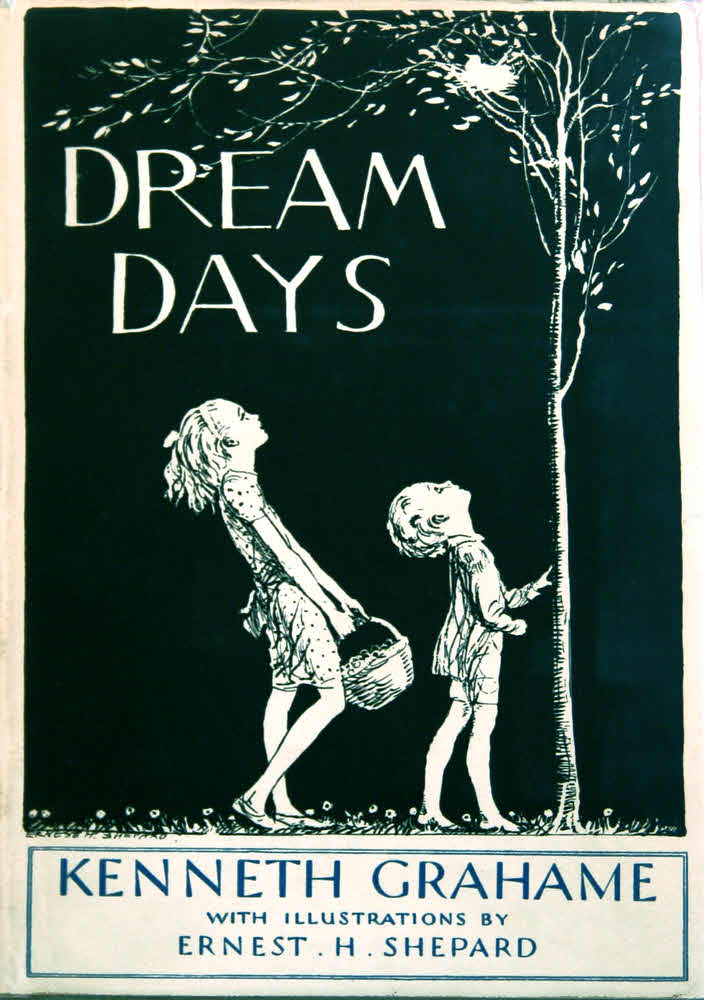
Another "author" page, but with a twist... a page for the books of Kenneth Grahame... and, tangentially, the drawings of Ernest Shepard. (See also my Milne page, below.) Most people have heard of The Wind In the Willows, but The Golden Age and Dream Days, books about childhood in the late 1800s, with lessons still valid today, and a glimpse of a bygone era, deserve to be better known. They are both available at Project Gutenberg.
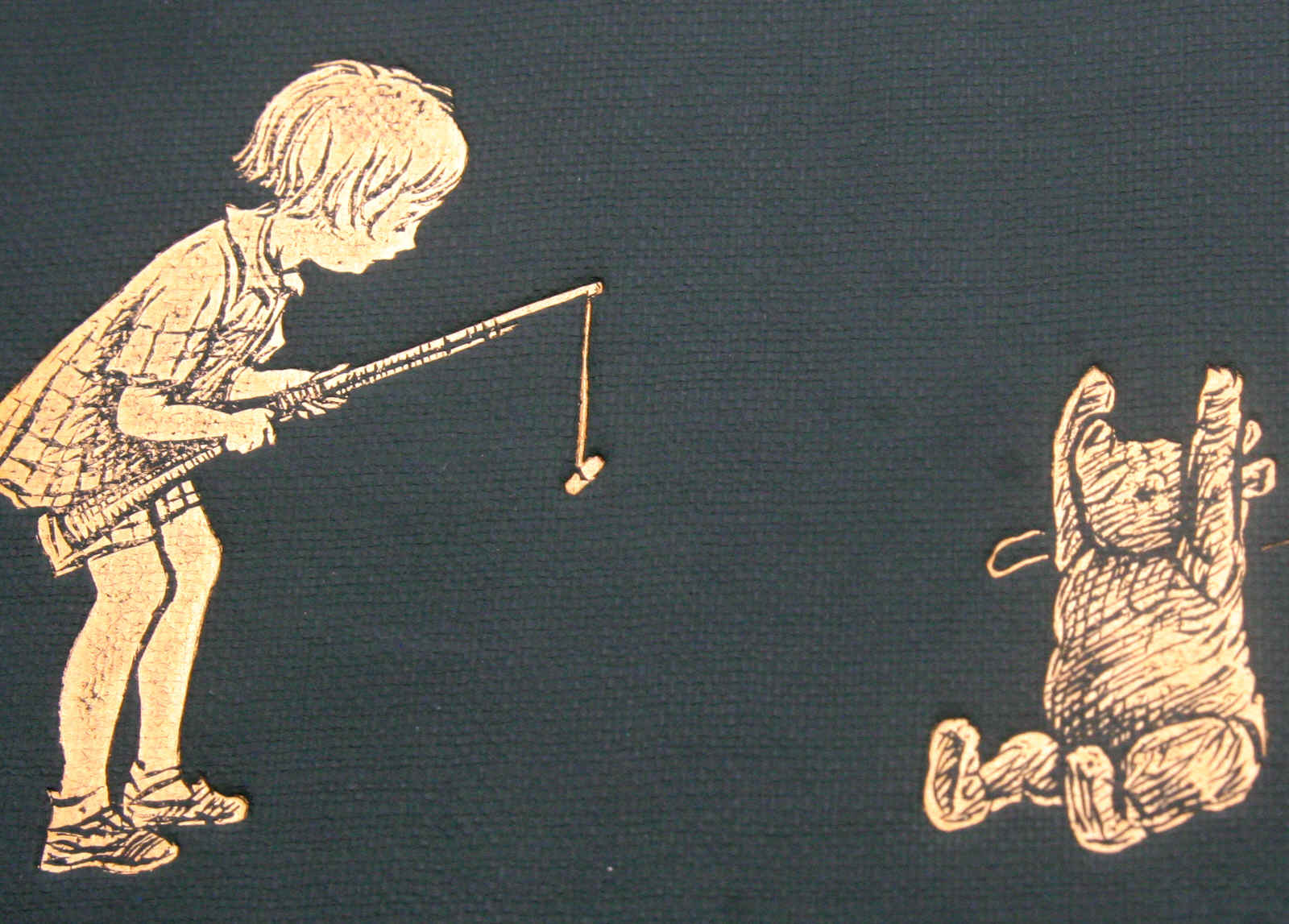
A discussion of the not- for- the- faint-hearted(!) path you would be starting down, if you are considering collecting the Winnie-the-Pooh books of AA Milne, with the incomparable illustrations by EH Shepard.
Inscribed? Printed?: If there is an interesting inscription in a book, it can make it more valuable. But sometimes something is ambiguous... is it printed? Was it hand written? I was fooled by an inscription in Versace's L'uomo Senza Cravatta (also published in English, as "Men Without Ties".) I've done a short page with illustrations to show that the "Ai 3 Antonio..." is an inscription.
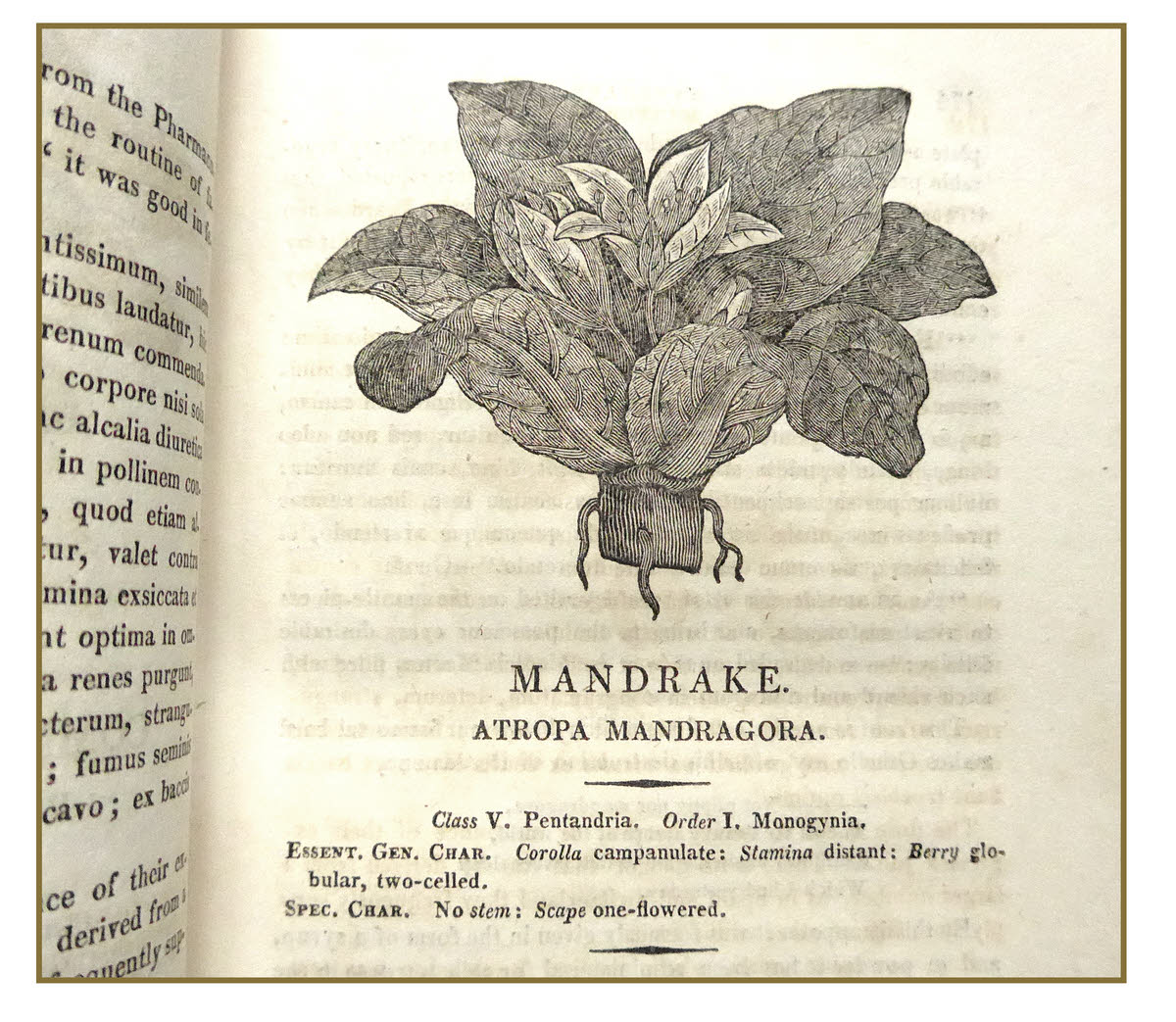
A blog recounting a fun fortnight in the life of a collector, The Excitements of Book Collectors. Written in hopes of inspiring you to give it a try.
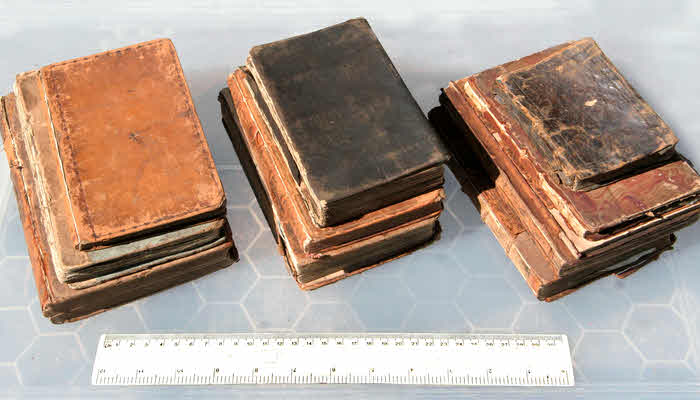
A discourse on some good luck I had with a job lot of badly damaged old books in a general furniture/ art/ jewelry auction. It could happen to you! It could happen to me again... but I won't hold my breath, and don't spend your mortgage money.
I was fascinated for many years about how maps are made. Also ignorant of how they were made before aerial surveying. So I've written a page about it for you. It links to discussions about numerous (related!) topics, including how you might make a good transit. Not for everyone, perhaps, but if you too feel the pull of "Can I make it work?" challenges, this is a fun one!
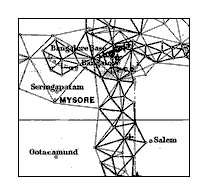
One of the great mapping projects of all time was the Great Trigonometrical Survey of India undertaken by the British in the 1800s. That link will take you to the relevant page within the pages about making maps yourself mentioned in the previous paragraph.
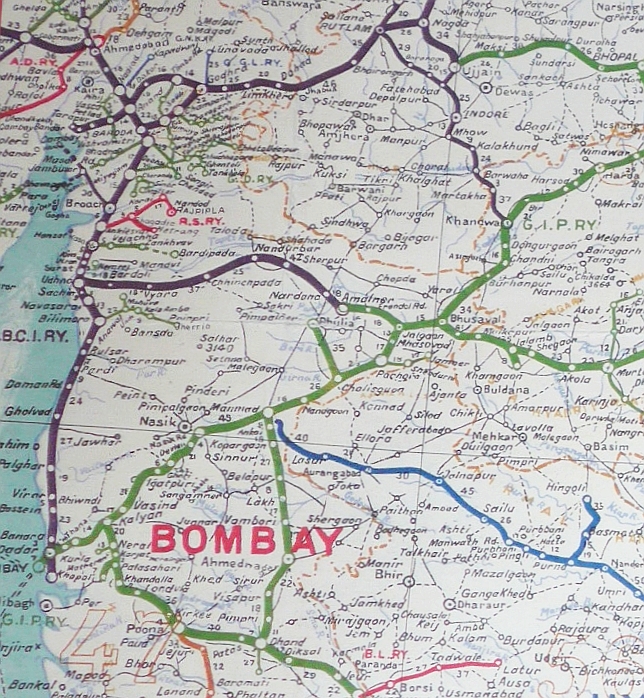
India. Railways. A map from 1927, with an extraordinary amount of information. And rather pretty with it. Also, consider the importance of the railways in the history of India, and her present day propserity.
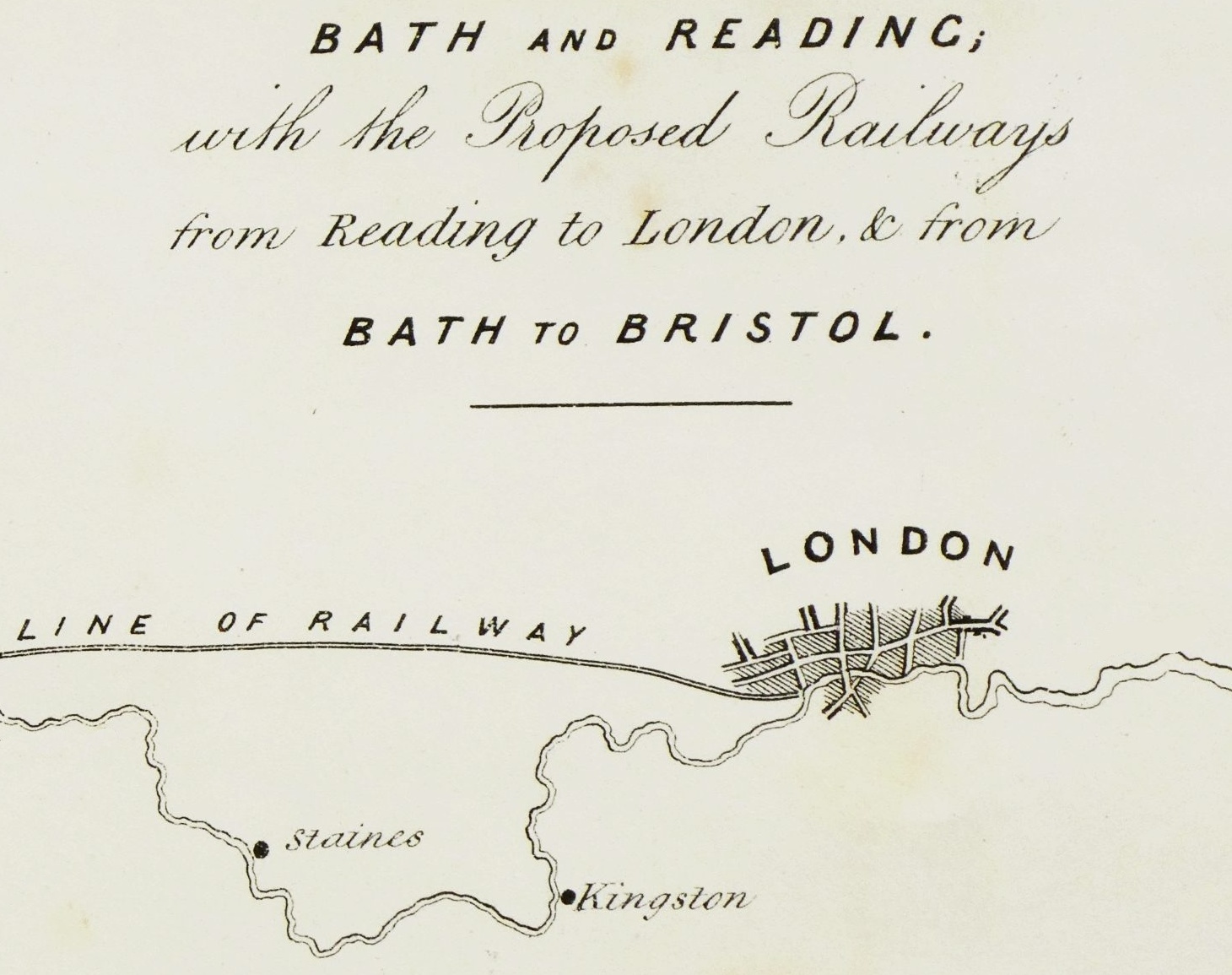
The early days- Brunel. Dawn of Great Western Railway. A map from, at a guess, 1830?... Brunel starting towards creating the second ever inter-city passenger train service, starting the Great Western Railway company.
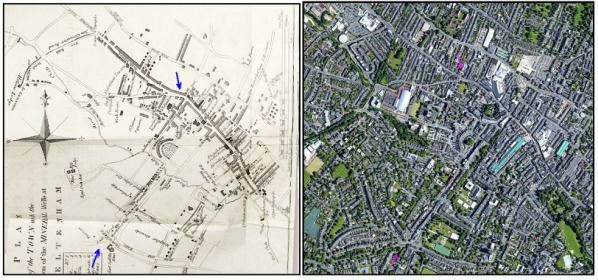
A small page... with images to compare the center of Cheltenham (England) as it was in 1814 with how it is today.
![]()
In the 1800s, there were amazing people with an extraordinary capacity for work. Either that, or the absence of television make a bigger difference than I care to imagine. One such made many, many maps. I have attempted some pages to celebrate George Frederick Cruchley's maps of London, and also help collectors identify the date of any they have. (Thumbnail shows Buckingham Palace in about 1829 (Marked "The King's Palace" then, having been "Buckingham House" previously.)
![]() Oh dear... I had a chance to photograph a gorgeous map... but seem to have failed entirely to do it justice. And I was going to do "just a quick page" for it. Ha. Four hours later... Map of the Geology of Sussex, England, Ordnance Survey, 1864. Although I have failed to capture all of its glory, I hope that at least a bit of the original's glory will shine from my webpage.
Oh dear... I had a chance to photograph a gorgeous map... but seem to have failed entirely to do it justice. And I was going to do "just a quick page" for it. Ha. Four hours later... Map of the Geology of Sussex, England, Ordnance Survey, 1864. Although I have failed to capture all of its glory, I hope that at least a bit of the original's glory will shine from my webpage.
![]() Another geological map, England, Wales, and part of Scotland. Published only twenty-three years after William Smith's important map. (Subject of Simon
Winchester's book, "Map That Changed The World".)
Another geological map, England, Wales, and part of Scotland. Published only twenty-three years after William Smith's important map. (Subject of Simon
Winchester's book, "Map That Changed The World".)
![]() Geological... and paleontological!... map of Wales, from fourth edition of Roderick Murchison's book in which he notices how there is a progression from simple to complex in the fossils you find in rocks. And he noticed more than this. See the page.
Geological... and paleontological!... map of Wales, from fourth edition of Roderick Murchison's book in which he notices how there is a progression from simple to complex in the fossils you find in rocks. And he noticed more than this. See the page.
A book to read! If you are even remotely interested in the previous three maps, read Brenda Maddox's wonderfully clear and accessible Reading the Rocks: How Victorian Geologists Discovered the Secret of Life (Goodreads reviews). This book is not just for geeks!
The thrill of the chase... another auction tale... Bought a nice map. Not as "nice" as I'd hoped, but others in the lot were nicer than I'd given them credit for.
A map by Claude Joseph Sauthier of what New York consisted of in about 1770. It set me thinking, and I produced a web page to share my musings. You may be surprised by the history of the borders of "New York".
Charles Booth's Poverty Maps of London, 1889: Almost as soon as I had structured this into two sections, one for books, one for maps, along comes a book that is important for the maps in it. Sigh...
A few modern books about maps for the general reader or collector. I hope you will find them interesting.
I've invested in the stock market for many years. Fun, and profitable... if you have the time, the energy and the inclination.
Given some of the things that are going on these days, I began to wonder if I should diversity my investments, as a hedge against "events" in the stock market. Don't get me wrong: I still think my stock market holdings are my "best" investments... but I am enjoying having a small amount of my savings in books, as an alternative. I don't expect they will ever "perform" as well as my stock market holdings... but there are rewards, which shares simply don't deliver.
And "investing" in books is so much more fun! At the end of the day, one block of 100 shares of, say, IBM, is just like any other. And while you can choose between, say, IBM and Coca Cola, in book investing, so much more is going on!
Each copy of, say, Winnie-the-Pooh is unique. There are the different editions. Different bindings. Does it have a dust jacket? Box? Is it inscribed? By whom? To whom?
And then there's the fact that each copy is in the hands of a specific dealer. When I buy shares of IBM, it really doesn't matter who is selling them. And there's no scope for negotiations.
With books, each buyer and seller has their own story, their own motivations, their own needs and wants. Many dealers are willing to be flexible on prices... especially if you are buying more than one book in a single transaction. Or maybe you are ready to part with a book you bought earlier, and they are interested in it?
And so it goes on.
I only came to book collecting after the internet was mature. As with so many things, it has changed aspects of the game.
For all but the scarcest items, visiting Abebooks.com (or Abebooks.co.uk) will give you interesting perspectives on individual titles... and allow you to get in touch with sellers.
If you... wisely, in my view... would rather have a few Very Good books as opposed to many "okay" books, it will probably pay you to become friendly with a top end antiquarian book dealer. There are many to choose from. I owe most of what I know about book collecting from patient and friendly help from a number of dealers. I'm a long way from being "expert"... but I have enough knowledge at this point that I don't lie awake nights wondering "What have I done??!"
Even if you don't live near a major city, you can "visit" top grade dealers websites via the internet. But that is but a pale shadow of the pleasure to be had from a visit to a good dealers premises. A picture of a book really doesn't "do the job".
One thing to keep constantly in mind is the tremendous overheads a book-dealer must contend with. Try not to waste their time with casual enquiries, etc. Don't ask for ink- on- paper catalogs, if you aren't going to be making purchases. (They are often available electronically, anyway.) (Speaking of which... I have done a separate page to talk about an amazing catalog of books about Science, and related topics, which came to my attention in 2014.) Don't expect to be able to sell for, say, $80 something that you see dealers offering for $100. It Just Doesn't Work Like That.
Part of the reason I've enjoyed collecting so much is the very good luck I had with the bookshops I've come to buy from semi-regularly. A friend whose father was a collector put me on to the first one I went to... and I remain a customer there. From that beginning, contacts at a few other places developed. I'd like to name them... but that seems a little unfair, in sundry ways.
I'll close this page with a story of book-collecting which may amuse you. My thanks to asbestos_avenue for permission to quote it from the excellent page created by her, formerly available at eBay, to help people know whether the Harry Potter they have is the really valuable one, or something else.
(The page was a good read, in general, if you are curious about the world of the Book Mad. Maybe you can access a copy with the Wayback Machine. I hope so- it was nice. The URL was:
https://www.ebay.com/gds/PHOTOS-FIRST-STATE-Harry-Potter-Sorcerers-Stone-Book-/10000000000120828/g.html
In March 2023, London book dealer Peter Harrington says in a listing...
...required points of the first printing: Bloomsbury imprint, 10-down-to-1 number line, the list of equipment on p. 53 with "1 wand" appearing twice in the list, and the misprint
Editor's email address for comments or questions. Please cite "BookMad.htm"
![]() Page has been tested for compliance with INDUSTRY (not MS-only) standards, using the free, publicly accessible validator at validator.w3.org. Mostly passes.
Page has been tested for compliance with INDUSTRY (not MS-only) standards, using the free, publicly accessible validator at validator.w3.org. Mostly passes.
....... P a g e . . . E n d s .....